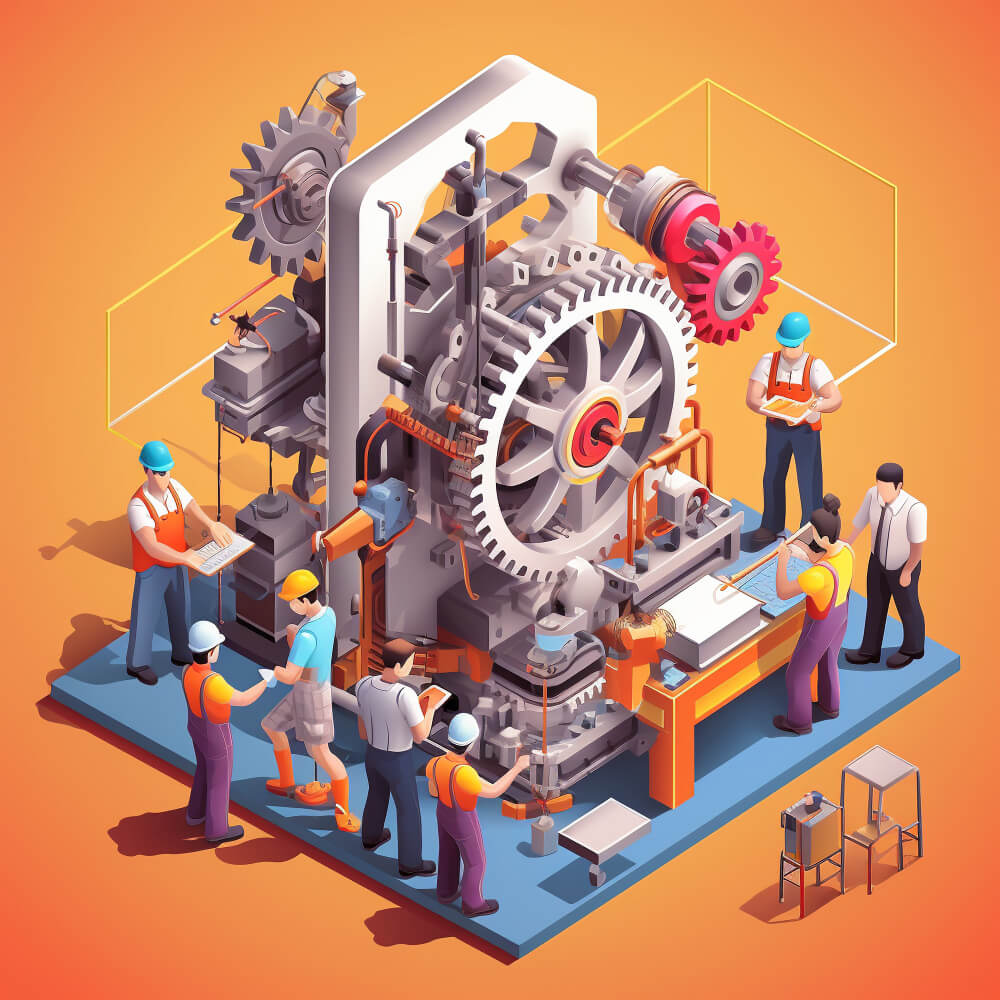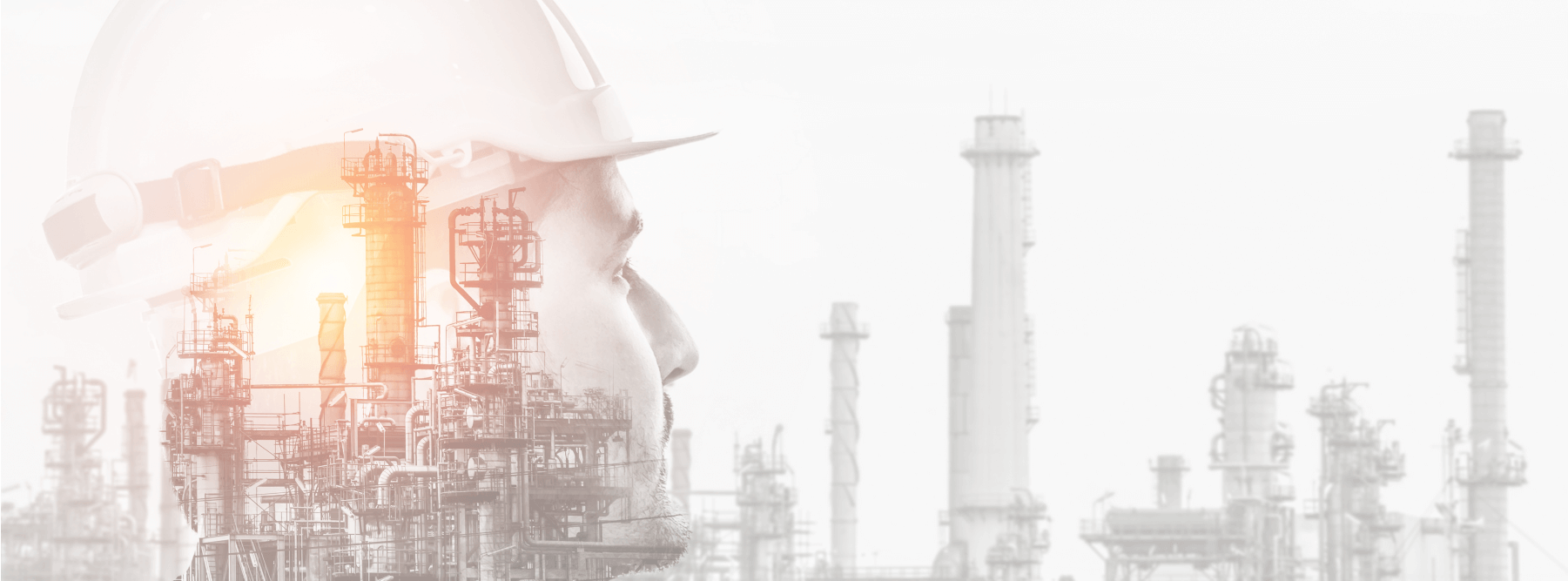Optimize machinery performance with effective lubrication. Learn how proper lubrication procedure increases efficiency, extends equipment lifespan, reduces downtime and costs, improves reliability and safety, protects the environment, and ensures compliance.

Effective machinery lubrication is critical for maintaining the efficiency and longevity of industrial equipment. Understanding the proper lubrication procedure not only minimizes downtime but also reduces maintenance costs, ensuring smooth operational workflows. According to Machinery Lubrication, we'll explore the essential steps in the lubrication procedure and discuss how implementing a structured lubrication program can enhance your machinery's reliability and performance.
Despite being in existence for a century, the industrial lubrication program lacks respect, continuity, order, and structure. Every year, millions of dollars are spent on replacing worn-out equipment parts because the lubricant and lubrication process are unable to fulfill the necessary function. In-plant and commercial laboratories also spend millions on lubricant analyses to find signs of failing lubrication.
However, a small investment can result in a significant return in this area of plant operations. For instance, personnel and materials can make up the majority of a maintenance budget in a capital-intensive organization. Although the cost of lubrication is one of the lowest line items in a standard budget, how this budget is handled can have a big impact on the remaining amount for maintenance in the near future.
A $100K investment in lubrication program improvements could yield $400K in maintenance cost reductions in overtime labor and replacement parts. Aside from the big, broad-based influences pushing formalized business methods like manufacturing-to-order (MTO) and just-in-time delivery (JIT), ISO 9000 certification, and global rivalry, there are many reasons to codify and standardize excellence in lubrication.
What prevents this procedure from developing into a manufacturing environment center of excellence? We suggest that it is a synthesis of the subsequent elements:
- Lack of understanding the importance of excellence in lubrication practices.
- Lack of understanding how to achieve lubrication excellence.
- Lack of reinforcement from senior management, including supporting the expense of taking the time to develop procedures and train personnel so that practices can be achieved.
The Role of Management
The advantages of excellent lubrication must be persuaded of by senior management. This is achieved by simply and clearly articulating how their investment in this process would add value, boost output, cut expenses, and advance the business toward its financial and strategic objectives.
To ensure that all parties see the same potential for benefit, it is crucial for plant tribology practitioners to learn how to communicate their case to senior management in a language they can comprehend. Financial forecasting techniques such as net present value, cash flow, return on investment, and payback time must be thoroughly understood in order to provide fresh suggestions for enhancement.
The Role of Knowledge
The industrial world relies on a thin oil film, which is invisible to the naked eye. We have to change our perspective and acquire the skills necessary to protect this thin film through training and personal study. It is essential to comprehend the dynamic clearance between two mechanical surfaces in order to establish efficient practices and routines.
An efficient lubrication procedure is a step-by-step guideline that leads the user through a particular lubrication task. Examples of such tasks include cleaning, renal loop filtration, manual bearing lubrication, gearbox filling, checking, and top-off. Every activity is different and overlaps with other duties that are related to lubrication. We can better safeguard the environment and our way of life by comprehending the dynamic clearance between mechanical surfaces.
When preparing a lubrication procedure, consider the following:
- Strategy - how does the procedure support the broader maintenance strategy?
- Purpose - what needs to be accomplished?
- Procedure - how is the task accomplished, including the many details that determine safety, efficiency and effectiveness?
Strategy
In order to guarantee that lubrication programs meet the objectives of the larger operation, they ought to be incorporated into the larger maintenance activities. Reliability Centered Maintenance (RCM) is an approach that many operations have implemented to manage their equipment efficiently. RCM ascertains the necessary actions to guarantee the physical asset maintains its intended functionality. To achieve maximum availability, this technique entails selecting machines that can operate indefinitely and managing units that are comparable to each other. A machine's lubrication protocols should be in line with its overall maintenance strategy in order to optimize lubrication resources.
For example, A gearbox on a conveyor might be classified as process essential, but the same gearbox on a different conveyor might be classified as run-to-failure with a five-year life span. Depending on the quantity of run-to-failure units available, a lifecycle fill approach might be the most appropriate rather than treating both units equally. One option is to utilize a product without longer lifecycle benefits to closely monitor the other unit for symptoms of distress if the dependability expectation is higher. In order to achieve higher lubrication efficiency and effectiveness at a lower overall cost, it is essential to make sure that each system's practice is in line with the maintenance objective.
Purpose
It is intended to clarify the goals for the lubricating process while keeping this strategy in mind. The procedure's goal and specific tasks can never be defined in a single way, but in order to ensure compliance and clear up any confusion, certain details must be supplied. At the very least, the following should be the goal:
- The name of the item to be addressed (example: A/N 10043CD conveyor drive).
- The objective of the work (semiannual coupling inspection and relubrication).
- Identification of the individual to perform the task (Lubrication Technician, MLT Level I Certified).
- Operational and safety conditions (example: equipment must be locked out before work can be accomplished).
- The amount of time allocated to the task.
Task objectives should include the goal of the task, the location, the people involved, the tools and supplies needed, any safety or operational concerns, and the amount of time allocated. It is best to arrange similar components together according to their maintenance strategies. To expedite the process without sacrificing quality, a template with general information might be made.
Procedure
The process must comply with the five tenets, or principles, known as the five Rs of lubrication, while keeping the strategy in mind. The five Rs are:
- The right product
- The right place
- The right amount
- The right time
- The right attitude
The first four Rs require thorough research and understanding. While some details are easily accessible, guidelines are often developed as progress is made. It could be required to establish world-class practices internally, frequently with the assistance of a consultant or professional.
Right Product
The selection of a lubricant for an application should be based on the OEM's viscosity grade and boundary film formation properties for both oil and grease products. Factors such as speed, load, and operating conditions should be considered when modifying the OEM baseline recommendation. Factors such as gearbox rating, temperature, risk of contamination, accessibility, heat control mechanisms, and available lubricant products should also be considered.
The company should also consider the company's budget and goals when making the decision. The final decision should align with the company's equipment, lubricant, and maintenance strategy. Input from various resources, such as local distributors, OEMs, lubricant manufacturers, or subject-matter experts, should be considered, but internal resources like the company team should be used to make an educated decision. The final decision should align with the company's budget and goals.
Right Place
The process of designing the plant and its equipment usually dictates whether or not to lubricate it. However, it is crucial to confirm the accuracy of these details, as OEM guidelines dictate that every lubrication application point must be uncovered, photographed, tagged, and reinforced. This calls for a cross-functional team to make sure the right product is used where it should be, including people who install and maintain parts behind the slab. Operators that work directly with the equipment on a regular basis are typically better able to spot and fix any errors or missing information.
Right Amount
It is simple to evaluate oil volume requirements. For example, by figuring out how much oil is needed in a wet sump gear case that is isolated and splash-lubricated. The most challenging aspect of circulating oil systems is that oil is contained outside the reservoir in lubricating lines. Estimate an operating and stand-by level and account for the amount of lubricant in transit in order to maintain the proper predetermined level.
Although grease lubrication is more difficult, it can be simply determined using bearing suppliers' measurements and algorithms. Once the component needs have been determined, take installation, lubricant characteristics, and relubrication time into account. A complete picture can only be obtained by taking into account all the interrelated aspects that affect volume and cycle.
Right Time
The timing of relubrication intervals is influenced by many of the same factors that influence relubrication quantities. When maximizing the lubricant's qualities, take into account the application and environment and work your way up from the OEM guidelines. The environment will significantly affect how often grease needs to be relubricated, but less so for equipment that uses oil. The hardest aspect of this process is figuring out the design and operation specifics.
Right Attitude
The human element is crucial in determining the physical properties and requirements for optimal lubrication. Poorly followed practices are of marginal value, and highly motivated individuals without role definition may lose interest. The right attitude towards lubrication is influenced by senior management's attitude towards the role. If a subliminal message of 'oil is oil and grease is grease' is reinforced by low wage scale, shallow job title, neglected training, and refusal of access to resources, inferior motivation and results may occur.
After forming a maintenance strategy, standardizing lubrication procedures, and achieving day-to-day consistency, the real work begins. Although it is challenging in a hot, dirty, and difficult work environment, the rewards can be measurable, lasting, and substantial.
Effective lubrication is essential for maintaining the efficiency, reliability, and longevity of your machinery. By following a systematic lubrication procedure and avoiding common mistakes, you can significantly enhance your equipment's performance and reduce maintenance costs.
For organizations looking to optimize their lubrication practices, consider leveraging specialized programs like the Noria’s Lubrication Program Development. This program offers tailored solutions to develop, implement, and maintain an effective lubrication strategy, ensuring your machinery operates at peak performance. Learn more about how CRE Philippines can help you achieve lubrication excellence at CRE Lubrication Program Development.
Implementing a well-structured lubrication procedure is not just a maintenance task but a strategic approach to ensure your machinery's longevity and operational efficiency. Contact us today and witness the transformative impact on your industrial equipment's performance.


